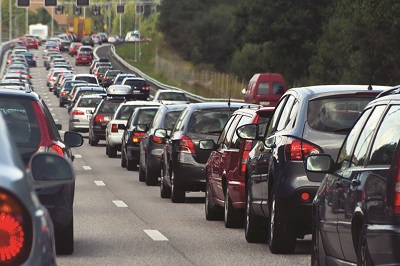A closer look at Maseru’s Congested Streets
By Motaung Hlalele
MASERU – the capital city of Lesotho, is a bustling urban center that experiences its fair share of traffic congestion, particularly during rush hour. This article is based on the phenomenon of rush hour in Maseru, examining its causes, impacts and potential solutions.
• The Commuter Conundrum
As the sun rises and sets, Maseru’s streets witness a significant influx of vehicles during peak hours. Commuters, from private car owners to public transportation users, find themselves caught in the whirlwind of congestion, trying to reach their destinations in a timely manner. This daily struggle has become an integral part of the city’s identity.
• Contributing Factors
Several factors contribute to the chaos that unfolds during rush hour in Maseru. Firstly, the city’s rapid urbanization and population growth has outpaced the development of its transportation infrastructure, leading to bottlenecks and overcrowded roads. Additionally, inadequate public transportation options and a growing number of private vehicles exacerbate the situation further. Construction activities, road closures, and the absence of efficient traffic management systems also play a role in compounding the congestion.
• Impact on Daily Life
The ramifications of Maseru’s rush hour extend beyond mere inconvenience. Increased traffic congestion leads to longer commute times, frayed nerves, and heightened stress levels among commuters. Businesses may suffer as employees struggle to reach work on time, and productivity takes a hit. The negative environmental impact of rush hour, including air pollution and increased fuel consumption, is a growing concern as well.
• Innovative Solutions
Efforts are underway to tackle the challenges posed by rush hour in Maseru. One key approach involves investing in the expansion and improvement of the city’s transportation infrastructure, including the construction of new roads and bridges. Additionally, promoting the use of public transportation, carpooling, and other sustainable modes of commuting can help alleviate congestion. Implementing advanced traffic management systems, such as intelligent traffic lights and real-time traffic updates, can enhance traffic flow and minimize delays.
• Future Outlook
Addressing rush hour congestion requires a multi-faceted approach and long-term planning. Maseru’s authorities must collaborate with urban planners, transportation experts, and stakeholders to devise comprehensive strategies that balance the city’s growth with sustainable mobility solutions. It is crucial to prioritize investment in public transportation, explore alternative routes, and promote a culture of responsible commuting.
Rush hour in Maseru presents a significant challenge for both residents and visitors, impacting their daily routines and overall well-being. While the current state of congestion may seem overwhelming, with thoughtful planning, infrastructure improvements, and a focus on sustainable transportation, Maseru can pave the way towards a more efficient and livable city. As the capital continues to grow, it is essential to prioritize the needs of its residents and create a transportation system that can withstand the demands of a modern, dynamic urban environment.


